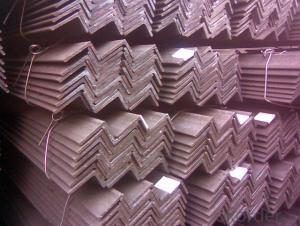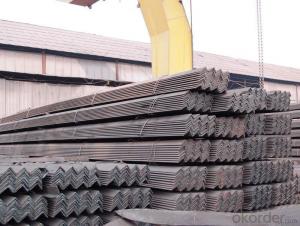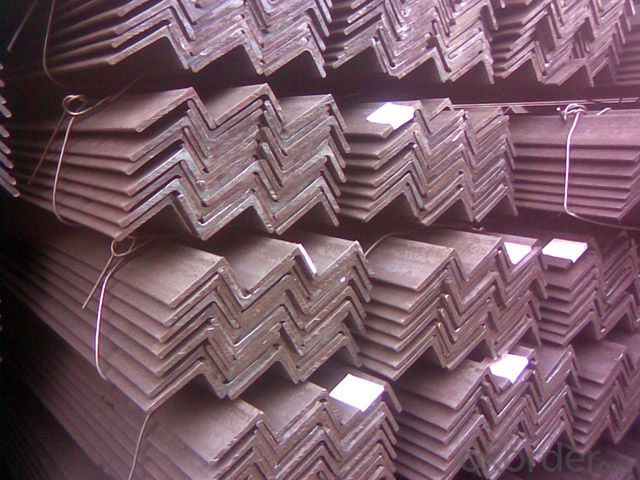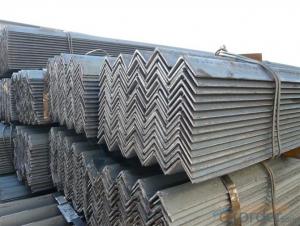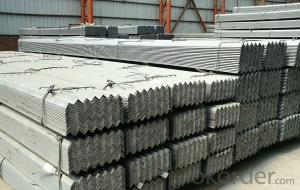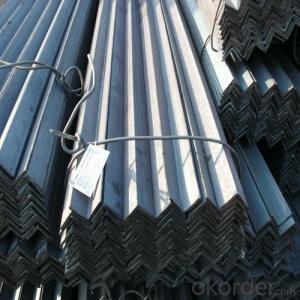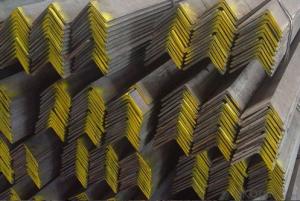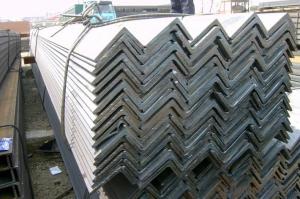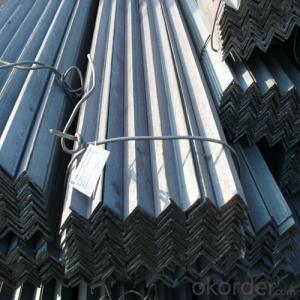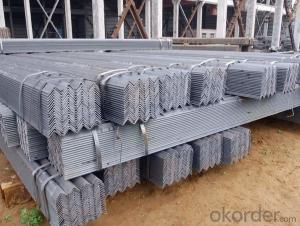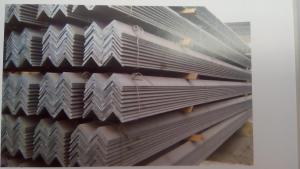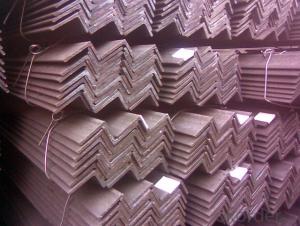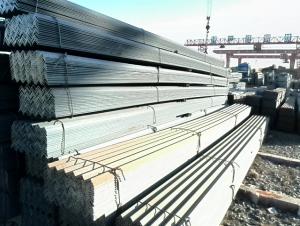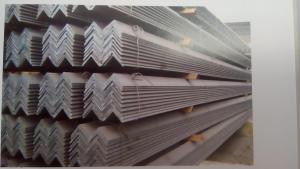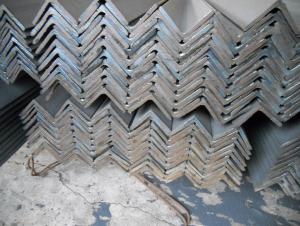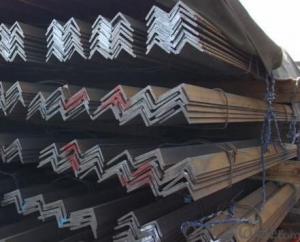Unequal Angle Steel Hot Rolled Steel, GB Standard Unequal Angle Steel
- Loading Port:
- Tianjin
- Payment Terms:
- TT or LC
- Min Order Qty:
- 25 m.t.
- Supply Capability:
- 20000 m.t./month
OKorder Service Pledge
OKorder Financial Service
You Might Also Like
Product Description:
OKorder is offering Unequal Angle Steel Hot Rolled Steel, GB Standard Unequal Angle Steel at great prices with worldwide shipping. Our supplier is a world-class manufacturer of steel, with our products utilized the world over. OKorder annually supplies products to European, North American and Asian markets. We provide quotations within 24 hours of receiving an inquiry and guarantee competitive prices.
Product Applications:
Unequal Angle Steel Hot Rolled Steel, GB Standard Unequal Angle Steel are ideal for structural applications and are widely used in the construction of buildings and bridges, and the manufacturing, petrochemical, and transportation industries.
Product Advantages:
OKorder's Unequal Angle Steel Hot Rolled Steel, GB Standard Unequal Angle Steel are durable, strong, and resist corrosion.
Main Product Features:
· Premium quality
· Prompt delivery & seaworthy packing (30 days after receiving deposit)
· Corrosion resistance
· Can be recycled and reused
· Mill test certification
· Professional Service
· Competitive pricing
Product Specifications:
Grade: Q235, Q235B, Q345, SS400, A36,St37-2
Standard: AISI, ASTM, GB, DIN, JIS
brand:nbsteels
MOQ:20mt
| Size( width*thickness )mm | width*thickness (kg/m) | Size( width*thickness )mm | width*thickness (kg/m) |
| 20*3 | 0.89 | 80*5 | 6.21 |
| 20*4 | 1.15 | 80*6 | 7.38 |
| 25*3 | 1.12 | 80*7 | 8.53 |
| 25*4 | 1.46 | 80*8 | 9.66 |
| 30*3 | 1.37 | 80*10 | 11.87 |
| 30*4 | 1.79 | 90*6 | 8.35 |
| 36*3 | 1.66 | 90*7 | 9.66 |
| 36*4 | 2.16 | 90*8 | 10.95 |
| 36*5 | 2.65 | 90*10 | 13.48 |
| 40*3 | 1.85 | 90*12 | 15.94 |
| 40*4 | 2.42 | 100*6 | 9.37 |
| 40*5 | 2.98 | 100*7 | 10.83 |
| 45*3 | 2.09 | 100*8 | 12.28 |
| 45*4 | 2.74 | 100*10 | 15.12 |
| 45*5 | 3.37 | 100*12 | 17.9 |
| 45*6 | 3.99 | 100*14 | 20.61 |
| 50*3 | 2.33 | 100*16 | 23.26 |
| 50*4 | 3.06 | 110*7 | 11.93 |
| 50*5 | 3.77 | 110*8 | 13.53 |
| 50*6 | 4.46 | 110*10 | 16.69 |
| 56*3 | 2.62 | 110*12 | 19.78 |
| 56*4 | 3.45 | 110*14 | 22.81 |
| 56*5 | 4.25 | 125*8 | 15.5 |
| 56*8 | 6.57 | 125*10 | 19.13 |
| 63*4 | 3.91 | 125*12 | 22.7 |
| 63*5 | 4.82 | 125*14 | 26.19 |
| 63*6 | 5.72 | 140*10 | 21.49 |
| 63*8 | 7.47 | 140*12 | 25.52 |
| 63*10 | 9.15 | 140*14 | 29.49 |
| 70*4 | 4.37 | 140*16 | 33.39 |
| 70*5 | 5.4 | 160*10 | 24.73 |
| 70*6 | 6.41 | 160*12 | 29.39 |
| 70*7 | 7.4 | 160*14 | 33.99 |
| 70*8 | 8.37 | 160*16 | 38.52 |
| 75*5 | 5.82 | 180*12 | 33.16 |
| 75*6 | 6.91 | 180*14 | 38.38 |
| 75*7 | 7.98 | 180*16 | 43.54 |
| 75*8 | 9.03 | 180*18 | 48.63 |
| 75*10 | 11.09 | 200*14 | 42.89 |
| 200*16 | 48.68 | ||
| 200*18 | 54.4 | ||
| 200*20 | 60.06 | ||
| 200*24 | 71.17 |
FAQ:
Q1: Why buy Materials & Equipment from OKorder.com?
A1: All products offered byOKorder.com are carefully selected from China's most reliable manufacturing enterprises. Through its ISO certifications, OKorder.com adheres to the highest standards and a commitment to supply chain safety and customer satisfaction.
Q2: How do we guarantee the quality of our products?
A2: We have established an advanced quality management system which conducts strict quality tests at every step, from raw materials to the final product. At the same time, we provide extensive follow-up service assurances as required.
Q3: How soon can we receive the product after purchase?
A3: Within three days of placing an order, we will begin production. The specific shipping date is dependent upon international and government factors, but is typically 7 to 10 workdays.
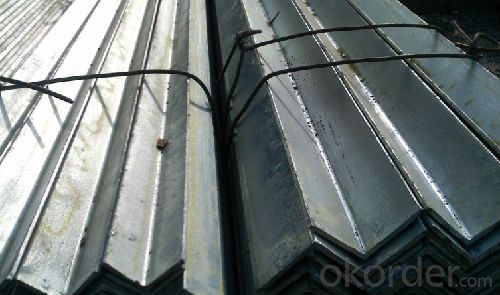
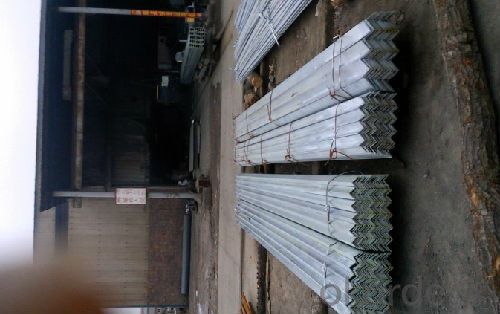
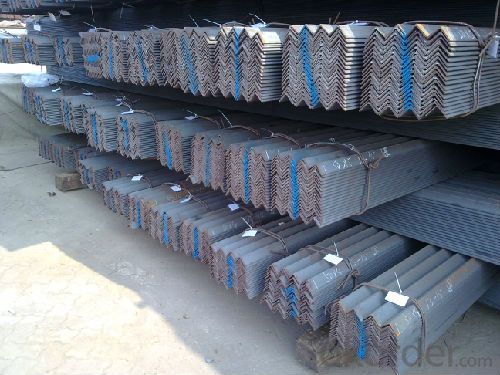
- Q: Can steel angles be used for structural applications?
- Indeed, structural applications can make use of steel angles. Due to their strength, durability, and versatility, steel angles are frequently employed in construction and engineering endeavors. The convenience of welding, bolting, or otherwise connecting them to other steel components makes them particularly valuable for providing structural support and stability. Frames, supports, braces, and reinforcements often incorporate steel angles. Moreover, their shape and design enable efficient load-bearing capabilities, rendering them suitable for a wide range of structural applications including bridges, buildings, towers, and industrial structures. In summary, steel angles present a dependable and budget-friendly option for structural applications.
- Q: Can steel angles be cut to size?
- Certainly! Steel angles are capable of being cut to the desired size. These versatile structural materials, commonly referred to as L-shaped angles, find extensive use in the construction and manufacturing sectors. One can effortlessly tailor their length using a variety of cutting tools such as saws, plasma cutters, or angle grinders. This enables customization and guarantees a seamless fit for the steel angles in their intended purpose. It is crucial to adhere to suitable safety precautions and utilize appropriate equipment while cutting these angles, given their formidable strength and durability.
- Q: Can steel angles be used for architectural purposes?
- Certainly, steel angles can be utilized for architectural purposes. These versatile structural components find application in a myriad of architectural scenarios. Their primary function often involves providing crucial support and stability during building construction. For example, steel angles are employed as lintels or beams, effectively bearing the weight of walls, roofs, or floors. Furthermore, they serve as columns or braces, bolstering the overall structural integrity of a building. Moreover, steel angles can serve as decorative elements within architectural designs, imparting a contemporary and industrial aesthetic to the structure as a whole. Architects and engineers frequently opt for steel angles due to their robustness, resilience, and malleability when designing and erecting buildings.
- Q: Can steel angles be used for ladder rungs?
- Yes, steel angles can be used for ladder rungs. Steel angles are often used in construction and fabrication for their strength and durability. They can provide a solid and secure surface for climbing on ladders. However, it is important to take into consideration the specific requirements and regulations for ladder rungs, such as the dimensions, spacing, and anti-slip properties. These factors ensure the safety and stability of the ladder for users. It is recommended to consult relevant safety guidelines and standards before using steel angles as ladder rungs.
- Q: Can steel angles be used for support structures in telecommunications installations?
- Yes, steel angles can be used for support structures in telecommunications installations. Steel angles are commonly used in construction and engineering applications due to their strength and durability. They provide excellent support and can withstand heavy loads and harsh environmental conditions. In telecommunications installations, steel angles are often used for mounting antennas, satellite dishes, and other equipment. They offer a stable and secure platform for the installation of telecommunications infrastructure, ensuring reliable and efficient communication networks. Additionally, steel angles can be easily customized and fabricated to meet specific design requirements, making them a versatile choice for support structures in telecommunications installations.
- Q: Can steel angles be used in conveyor belt supports?
- Yes, steel angles can be used in conveyor belt supports. Steel angles are commonly used as structural supports in various applications due to their strength and durability. They provide excellent load-bearing capacity and can withstand heavy weights, making them suitable for supporting conveyor belts. The angles can be used to create a sturdy framework or structure that holds the conveyor belt in place and allows it to move smoothly. Additionally, steel angles can be easily fastened or welded together, providing a secure and stable support system for conveyor belts.
- Q: What is the thickness of the national standard 8# angle steel? Thank you
- Test method: to test the chemical composition, test methods commonly used standards GB223, JISG1211-1215, BS1837, BS, C, f 19 manual is 22536.
- Q: How do you calculate the axial compression capacity of a steel angle?
- To calculate the axial compression capacity of a steel angle, you would need to consider several factors such as the dimensions and properties of the angle, the material properties, and the boundary conditions. The calculation typically involves determining the slenderness ratio, which is the ratio of the length of the angle to its thickness. This ratio helps determine whether the angle will fail in compression or buckling. The axial compression capacity can then be calculated using relevant design codes or formulas, taking into account factors such as the yield strength of the material and any additional considerations specific to the application.
- Q: What are the maximum allowable lengths for steel angles?
- The maximum allowable lengths for steel angles can vary depending on the specific application and the regulations and guidelines set forth by the relevant industry standards. Generally, the maximum allowable lengths for steel angles are determined by factors such as the material's strength, the load it is intended to bear, and the structural design considerations. In construction and engineering industries, steel angles are commonly used for various structural applications such as framing, bracing, and support. The maximum allowable lengths for steel angles are often specified by building codes, engineering standards, or project-specific design criteria. These regulations ensure that the angles can withstand the expected loads and provide adequate structural stability. It is important to consult the appropriate industry standards and regulations, as well as consult with a qualified structural engineer or designer, to determine the maximum allowable lengths for steel angles in a specific application. These professionals take into account factors such as the angle's dimensions, thickness, material properties, and the specific load requirements to determine the appropriate length that can safely and effectively meet the project requirements.
- Q: What is the typical thickness of the legs of a steel angle?
- The typical thickness of the legs of a steel angle can vary depending on the specific application and structural requirements. However, in general, the thickness of steel angle legs can range from 1/8 inch to 3/4 inch.
Send your message to us
Unequal Angle Steel Hot Rolled Steel, GB Standard Unequal Angle Steel
- Loading Port:
- Tianjin
- Payment Terms:
- TT or LC
- Min Order Qty:
- 25 m.t.
- Supply Capability:
- 20000 m.t./month
OKorder Service Pledge
OKorder Financial Service
Similar products
Hot products
Hot Searches
Related keywords
